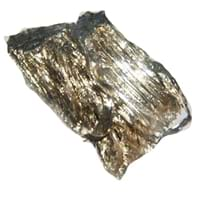Palladium vs Samarium
Periodic Table
Symbol
Pd
Sm
Group Number
10
8
Not Available
Period Number
5
6
Block
d block
f block
Element Family
Transition Metal
Lanthanide
CAS Number
7440053
99+
7440199
99+
Space Group Name
Fm_ 3m
R_ 3m
Space Group Number
225.00
2
166.00
6
Facts
Interesting Facts
- Palladium alloys are used for Jewelry contains (95% Palladium and 5% Ruthenium)
- In the late 1800s, Palladium metal used have more economical value than the Platinum metal.
- Palladium element is known as a good catalyst
- Samarium metals helps stimulating body metabolism.
- Samarium metals was 1st observed by Jean Charles Galissard de Marignac in Dydimia in 1853.
Sources
Ores of metals
Found in Minerals, Mining, Ores of Minerals
History
Who Discovered
William Hyde Wollaston
Lecoq de Boisbaudran
Discovery
In 1803
In 1879
Abundance
Abundance In Universe
2 * 10-7 %
22
5 * 10-7 %
19
Abundance In Sun
~0.0000003 %
24
~0.0000001 %
26
Abundance In Meteorites
0.00 %
99+
0.00 %
37
Abundance In Earth's Crust
0.00 %
99+
0.00 %
29
Abundance In Oceans
Not Available
0.00 %
40
Uses
Uses & Benefits
- Mostly palladium metal is used in catalytic converters. In electronic industry it is used in ceramic capacitors of mobile and computer.
- It is used in jewellery and dental fillings and crowns.
- Magnets of Samarium cobalt alloy are stronger than that of Iron and hence, they are used in microwave application.
- Samarium metal also used in optical lasers and infrared absorbing glasses and as a neutron absorber.
Industrial Uses
Aerospace Industry, Automobile Industry, Electronic Industry
Aerospace Industry, Automobile Industry, Chemical Industry, Electrical Industry, Electronic Industry
Medical Uses
Dentistry, Pharmaceutical Industry, Surgical Instruments Manufacturing
NA
Other Uses
Coinage, Bullion, Jewellery
Alloys, In Nuclear Reactors
Biological Properties
Toxicity
Toxic
Slightly Toxic
Present in Human Body
No
Yes
In Blood
Not Available
0.01 Blood/mg dm-3
22
Physical Properties
Melting Point
1,554.90 °C
22
1,072.00 °C
99+
Boiling Point
2,963.00 °C
33
1,900.00 °C
99+
Appearance
Physical State
Solid
Solid
Color
Silver
Silvery White
Luster
Metallic
Lustrous
Hardness
Mohs Hardness
4.75
9
Not Available
Brinell Hardness
320.00 MPa
33
441.00 MPa
27
Vickers Hardness
121.00 MPa
36
412.00 MPa
24
Speed of Sound
3,070.00 m/s
26
2,130.00 m/s
99+
Optical Properties
Refractive Index
1.72
1
Not Available
Reflectivity
84.00 %
4
Not Available
Allotropes
No
No
α Allotropes
Not Available
Not Available
β Allotropes
Not Available
Not Available
γ Allotropes
Not Available
Not Available
Chemical Properties
Chemical Formula
Pd
Sm
Isotopes
Known Isotopes
38
1
30
9
Electronegativity
Pauling Electronegativity
2.20
4
1.17
40
Allred Rochow Electronegativity
1.35
21
1.07
32
Allen Electronegativity
1.59
22
Not Available
Electropositivity
Pauling Electropositivity
1.80
99+
2.83
14
Ionization Energies
1st Energy Level
520.23 kJ/mol
99+
544.50 kJ/mol
99+
2nd Energy Level
7,298.22 kJ/mol
2
1,070.00 kJ/mol
99+
3rd Energy Level
11,815.13 kJ/mol
3
2,260.00 kJ/mol
99+
4th Energy Level
Not Available
3,990.00 kJ/mol
37
Electrochemical Equivalent
1.99 g/amp-hr
30
1.87 g/amp-hr
34
Electron Work Function
5.12 eV
3
2.70 eV
99+
Other Chemical Properties
Chemical Stability, Corrosion, Ionization, Solubility
Ionization, Radioactive Isotopes
Atomic Properties
Atomic Number
46
99+
62
99+
Electron Configuration
[Kr] 4d10
[Xe] 4f6 6s2
Crystal Structure
Face Centered Cubic (FCC)
Rhombohedral (RHO)
Crystal Lattice
FCC-Crystal-Structure-of-Palladium.jpg#100
RHO-Crystal-Structure-of-Samarium.jpg#100
Atom
Number of Protons
46
99+
62
99+
Number of Neutrons
60
99+
88
39
Number of Electrons
46
99+
62
99+
Radius of an Atom
Atomic Radius
137.00 pm
40
180.00 pm
14
Covalent Radius
139.00 pm
99+
198.00 pm
13
Van der Waals Radius
163.00 pm
40
229.00 pm
20
Atomic Weight
106.42 amu
99+
150.36 amu
99+
Atomic Volume
8.90 cm3/mol
99+
19.95 cm3/mol
19
Adjacent Atomic Numbers
Valence Electron Potential
33.00 (-eV)
99+
44.80 (-eV)
37
Lattice Constant
389.07 pm
25
362.10 pm
33
Lattice Angles
π/2, π/2, π/2
π/2, π/2, 2 π/3
Lattice C/A Ratio
Not Available
Not Available
Mechanical Properties
Density
Density At Room Temperature
12.02 g/cm3
29
7.52 g/cm3
99+
Density When Liquid (at m.p.)
10.38 g/cm3
17
7.16 g/cm3
32
Tensile Strength
Not Available
Not Available
Viscosity
Not Available
Not Available
Vapor Pressure
Vapor Pressure at 1000 K
0.00 (Pa)
27
0.94 (Pa)
9
Vapor Pressure at 2000 K
0.00 (Pa)
30
Not Available
Elasticity properties
Shear Modulus
44.00 GPa
17
19.50 GPa
34
Bulk Modulus
180.00 GPa
9
37.80 GPa
35
Young's Modulus
121.00 GPa
16
49.70 GPa
37
Poisson Ratio
0.39
5
0.27
19
Other Mechanical Properties
Ductile, Malleable, Weldable
NA
Magnetic Properties
Magnetic Characteristics
Specific Gravity
12.02
21
7.52
99+
Magnetic Ordering
Diamagnetic
Paramagnetic
Electrical Properties
Electrical Property
Conductor
Conductor
Resistivity
105.40 nΩ·m
29
0.94 nΩ·m
99+
Electrical Conductivity
0.10 106/cm Ω
22
0.01 106/cm Ω
99+
Electron Affinity
54.23 kJ/mol
17
50.00 kJ/mol
21
Thermal Properties
Specific Heat
0.24 J/(kg K)
23
0.20 J/(kg K)
31
Molar Heat Capacity
25.98 J/mol·K
33
29.54 J/mol·K
7
Thermal Conductivity
71.80 W/m·K
23
13.30 W/m·K
99+
Critical Temperature
Not Available
Not Available
Thermal Expansion
11.80 µm/(m·K)
33
12.70 µm/(m·K)
30
Enthalpy
Enthalpy of Vaporization
376.60 kJ/mol
19
166.40 kJ/mol
99+
Enthalpy of Fusion
16.74 kJ/mol
18
8.62 kJ/mol
40
Enthalpy of Atomization
393.30 kJ/mol
22
209.00 kJ/mol
99+
Standard Molar Entropy
37.60 J/mol.K
40
69.60 J/mol.K
15
|
||
|
||
|












